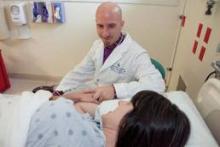The PRE-DELIRIC model contains 10 risk factors: age, APACHE-II (Acute Physiology and Chronic Health Evaluation) score, admission group (consisting of medical, surgical, trauma, and neurological patients), coma, infection, metabolic acidosis, use of sedating medications, morphine use, blood urea nitrogen levels, and urgent admission. The main outcome measured was development of delirium within the ICU. The model’s ability to predict delirium was compared with that of ICU physicians and nurses to independently predicting delirium within 24 hours of admission.
The model’s area under receiver operating characteristics curve (AUROC) was 0.85 pooled across three cohorts (0.87, 0.86, and 0.84 for the first, second, and third cohorts, respectively). The AUROC for both physicians’ and nurses’ predictions of delirium was 0.59. Providers’ predictive accuracy did not differ by level of clinical experience.
PRE-DELIRIC is the first predictive model published for the ICU population experiencing delirium. Study design makes sense for the intention. It is important to note that patients with a history of alcohol abuse and dementia were excluded. It was felt that their risk for developing delirium is high even without consideration of other factors.
The model clearly outperformed the physicians and nurses, who were equally inferior when it came to predicting delirium. It also appears that this could be an area of medicine where experience is not accompanied by improved accuracy. More experienced clinicians fared no better than their greener colleagues. Limitations included a varied case mix from multiple specialties and inclusion of risk factors that were not based on their systematic review for those associated with delirium.
Both of these studies move us forward. The first should heighten our level of awareness that hospitalization with delirium is a major marker for undesired outcomes. It also should prompt proactive communication with our AD patients’ families about expectations in this scenario. The second should help create a mindset of predicting and preventing delirium rather than our current model, which is to screen and then treat.
Dr. Bekanich is with the department of medicine and is medical director of palliative care at Seton Healthcare in Austin, Tex. To respond to this commentary, e-mail ehospitalistnews@elsevier.com.


